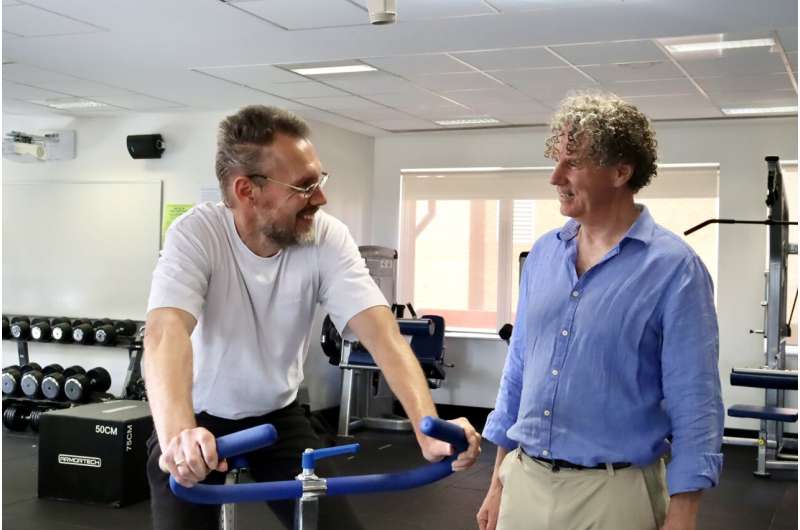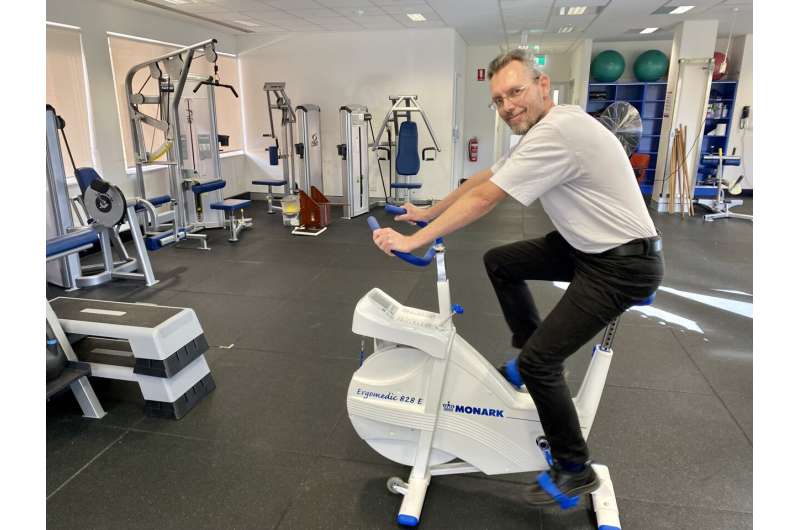This article has been reviewed according to Science X's editorial process and policies. Editors have highlighted the following attributes while ensuring the content's credibility:
fact-checked
peer-reviewed publication
trusted source
proofread
Study offers fresh hope for people living with chronic back pain

Long-term sufferers of chronic back pain experienced dramatic reductions in pain and related disability that remained at their one-year follow-up after taking part in a new treatment tested by Curtin-Macquarie-Monash University research.
Published today in the journal The Lancet, the research found large clinically significant improvements in the intensity of pain and pain-related disability among almost 500 people who had been seeking help for their pain for an average of four years before trialing the new treatment.
The treatment, which delivered a health care and work productivity saving of more than $5,000 per person, took a whole-person approach by also helping people to make lifestyle changes aimed at improving their social and emotional health.
Lead author Associate Professor Peter Kent, from the Curtin School of Allied Health, said the findings produced compelling evidence that the new treatment had a large and lasting impact at a "clinically important" level.
"Lower back pain is the leading cause of disability across the globe, contributing to a loss of work productivity and early retirement worldwide," Associate Professor Kent said.
"These exciting results give hope to the millions of people around the world who are disabled by back pain. It also provides a clear roadmap for clinicians, health services and policymakers on how to reduce the growing burden of chronic back pain with a high-value, low-risk approach based on the best scientific evidence."

The treatment, called Cognitive Functional Therapy (CFT), offered personalized and intensive coaching sessions that helped people make sense of their pain, focused on retraining them to move in ways that reduced their pain, and built confidence in movements and activities they had been afraid of or were avoiding. The treatment was delivered in 20 clinics across Perth and Sydney by 18 physiotherapists that were specifically trained to deliver CFT.
Participants living with chronic back pain—including many who had high levels of disability—tested the program in up to seven sessions over a 12-week period, followed by a booster session at six months. They were followed-up by questionnaires until 12 months. More than 80 percent of the participants were satisfied with the treatment.
Co-author Professor Peter O'Sullivan, also from the Curtin School of Allied Health, who developed the new treatment, said it put the patient at the center of care.
"This new treatment takes on board the individual characteristics of the person who has been living with chronic back pain by addressing their concerns and movement limitations under the skilled guidance of a trained physiotherapist," Professor O'Sullivan said.
"This differs to traditional, more passive approaches—including massage, spinal manipulation, medication and injections—because it puts the person in charge of their condition, helping them to understand the factors contributing to their pain, building control and confidence in their body to get back to valued activities. It was particularly rare and thrilling to discover that the significant reduction in pain and distress that these people living with chronic back pain experienced had remained right up to one year after trialing this new treatment."
Co-author Professor Terry Haines, from Monash University, who investigated the economic efficiency, said the findings delivered significant health care and work productivity savings.
"The main economic efficiency results showed participants who took part in the CFT treatment saved more than $5,000 per person, largely driven by improvements in their productivity in both paid and unpaid work," Professor Haines said.
"This has the potential to deliver significant savings to the global economy because we know the burden that lower back pain is contributing to a loss of work productivity and early retirement worldwide."
Co-author Professor Mark Hancock, from Macquarie University, said the physiotherapists who carried out the new treatment across Perth and Sydney had experience in treating people with persistent lower back pain and underwent specialized training over five months to deliver the care set out in the new treatment.
"An important learning from our study was that it took quite a lot of training for physiotherapists to develop the skills and confidence to become competent to deliver the intervention at a high standard, despite the fact that many were already experienced," Professor Hancock said. "The training included practice on real patients and receiving feedback from the trainers."
An international team of back pain experts, led by researchers from Curtin and Macquarie University in partnership with researchers from Monash University, the University of Limerick, Imperial College London, the University of Southern Denmark and The University of Western Australia conducted the research.
More information: Cognitive Functional Therapy with or without movement sensor biofeedback versus usual care for chronic, disabling low back pain (RESTORE): a randomised controlled, three-arm parallel group, phase 3, superiority clinical trial', The Lancet (2023). DOI: 10.1016/S0140-6736(23)00441-5

















